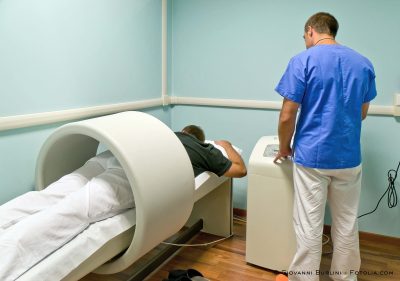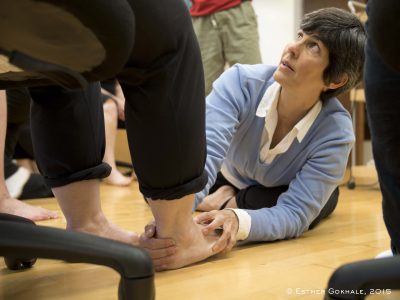The Posture-Power Connection
There are few things as disempowering as a broken back. By "broken back" I mean to include painfully herniated disks, significant stenosis, as well as severe muscle tension and other less sustained spinal phenomena that constitute "non-specifc back pain" - and nonetheless hurt like heck. I remember this state clearly and have some journal entries to fill gaps in my memory - "...maybe I'm paying too much attention to my back. Maybe it's in my head..." 28 years ago, I felt like a broken straw.
Over the years, both as a healer and a teacher, I've been very interested in where the place of power resides in the process of healing. One of my influencers is Susun Weed, author of Healing Wise. Susun speaks with an authentic voice, is way out there (in her book, she transcribes her conversation with dandelions), and has some keen insights. Like her, I see the place of power in modern medicine to be in the medical machinery, the lab, the test results.

The place of power in modern medicine often lies in the lab and machinery
In the Shamanic tradition, the practioner is vested with special powers: he/she has mystical powers that the patient needs to return for - and depends on.

In Shamanic tradition, the place of power rests with the practitioner.
Yup'ik shaman exorcising evil spirits from a sick boy, Nushagak, Alaska, 1890s
In the Wise Person tradition, the place of power remains with the patient / student. The healer / teacher is a wise person whose role is similar to the role of a parent or advisor.

Gokhale Method teachers facilitate their students’ self-empowerment
A Gokhale Method teacher is trained to be a wise person. His/her function is to educate, facilitate, unencumber, and support the student. The student is seen as basically well-designed and, almost always, provided with a robust, functional frame. The problem is that modern culture hasn't nurtured healthy physicality. Poor furniture and clothing design, counterproductive guidelines like "sit up straight" and "chin up", and substantial drift in the recognized norms for spinal shape all contribute to a whopping 100 billion dollar a year problem (that's the number for the US alone) that is getting worse. Gokhale Method teachers step back from the band-aid approaches (even those of us who are trained to provide band-aid assistance when we wear other healing hats) and deftly approach the problem at its root. We teach our students how to restore their Primal Posture™- the shape they had when they were little children, and that their ancestors had. We help students peel away layers of misinformation and bad habit. We help students realize how powerful they really are. We guide them to Remember When It Didn't Hurt™. Not only can they get rid of pain and restore function, but they can experience high levels of energy, look and feel powerful, and strike that happy balance between being rooted in themselves and available to life.

Mex, our upcoming teacher in Singapore, helps his student,
Yongrim, learn to glidewalk.
Training practitioners of various sorts to become strong Gokhale Method teachers involves many significant, as well as subtle, shifts. I recall one chiropractor in teacher training remark "This is so different from chiropractic! In chiropractic we know which way we want to shape the body; here I have to listen to the body to see where it wants to go." A subtle shift that gets repeated every teacher training is eliminating the "Now I'd like you to...." With Zen-like pruning, we learn to eliminate the "I" where it's not necessary. The process is about helping the person find their way home - the teacher is the guide who knows the terrain better than the student. That's all.
With love and hearty wishes,
Esther
Join us in an upcoming Free Workshop (online or in person).
Find a Foundations Course in your area to get the full training on the Gokhale Method!
We also offer in person or online Initial Consultations with any of our qualified Gokhale Method teachers.

Comments
I love this!! Can we have
I love this!! Can we have this put into a format as a Hand out?
I'm so glad you love this!
I'm so glad you love this! Yes, of course you can use it - I'll request our staff to make a nicely designed pdf and we'll attach it here.
Great! Yes, exactly so. It's
Great! Yes, exactly so. It's so great to remember that each person is adequate to their life, and that the Gokhale teacher is simply reminding, encouraging, demonstrating, and facilitating the student to come back to their natural, powerful posture. Yes!
Thanks so much for this
Thanks so much for this updated and timely article. It is exactly what we need as a gentle reminder that it IS possible to remember when it did not hurt! I am looking forward to the PDF, too.
Norm
This is beautiful, Esther.
This is beautiful, Esther. Thank you.
Add New Comment
Login to add commment
Login